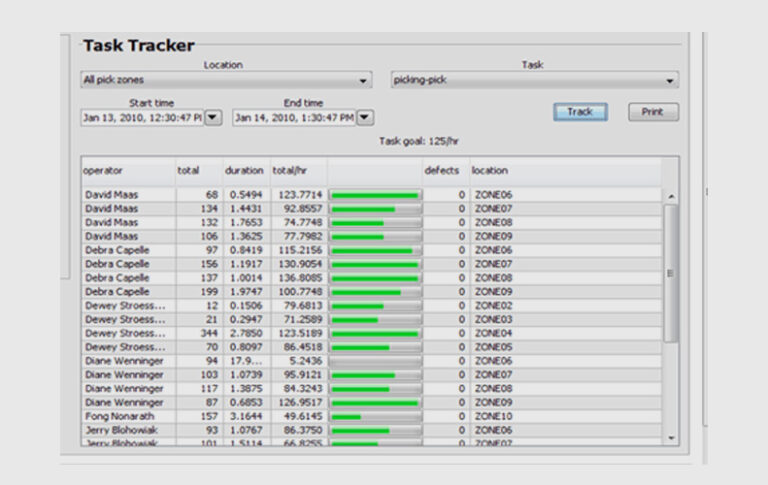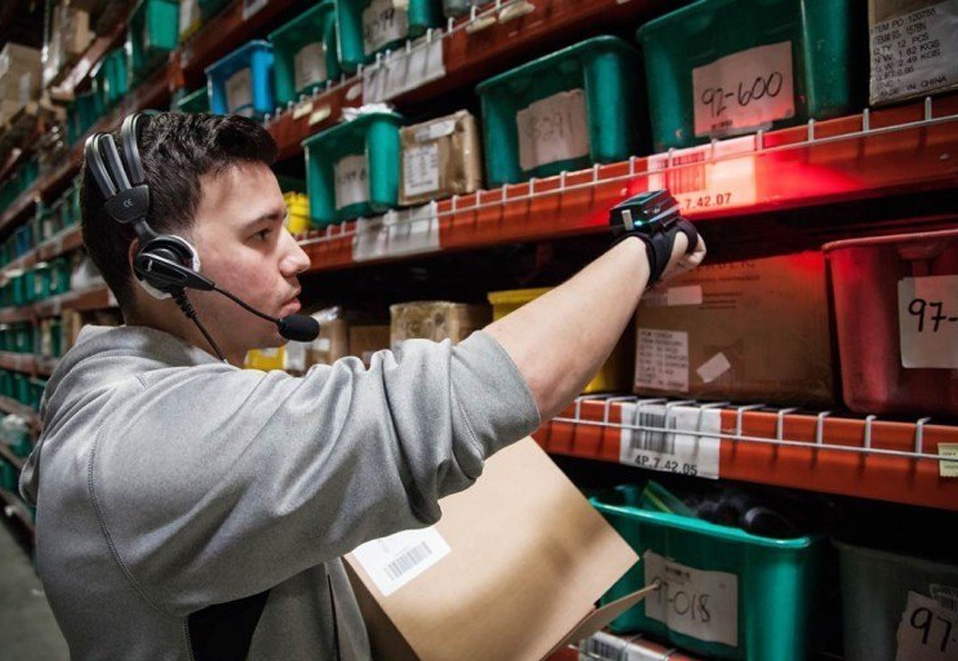
Order picking can be the most labor-intensive activity in omni-channel e-commerce order fulfillment operations, especially piece-picking operations. Orders that require specific picking rules such as a specific package type, color, accessory, promotional item, document, or gift wrapping benefit the most from voice picking system technology because it directs and instructs operators on the required shipment and packing rules.
Voice-guided picking technology is highly flexible and can change the instructions for the same SKU pick based on a customer, retailer/e-tailer’s specific shipment rule.
A pick-by-voice system automatically prompts the picker in a step-by-step manner with the work rules and integrates a paperless voice instruction step-by-step work process to validate picking.
Voice picking technology outperforms paper-based picking, RF terminals, message displays, and many times pick-to-light, especially when accounting for the benefit of its increased accuracy!

The latest advancements in speaker-independent voice recognition technology further drive increased productivity and ease of use.
The voice engine’s technology has close to 100% recognition rates across multiple languages, while operating in noisy industrial operations.
It requires zero voice training, which greatly reduces a worker’s training time to minutes, making it possible to use temporary workers for picking applications.
The latest generation multi-modal voice technology combines a lean voice command set with integrated hands-free scanning for single-touch pick and pack verification.
Integrated barcode scan validation, especially the use of the latest 2D hands-free scanners, significantly increases the speed, flexibility, and accuracy well and beyond traditional speaker-dependent voice picking technologies.
Streamlines Work Tasks in Many Areas of Fulfillment Operations
Speaker-independent natural language voice commands and responses are not only suitable for picking, but support all DC order fulfillment activities such as put to order, replenishment, cycle counting, pallet building, case sorting, and inspection tasks.
A pick-by-voice system directs the worker to the location in the most efficient travel path, and directs the operator to scan a SKU barcode by using a back-of-hand or ring-mounted barcode scanner.
It directs and validates each step through a combination of voice commands/responses and hands-free two-dimensional (2D) barcode scanning. 2D scanning is omni-directional scanning to speed up by 5% the location, SKU, lot and serial ID barcode capture, and validation steps.
Hands-free, Eyes Forward Picking for 99.9% Accuracy
Keeping worker’s hands-free and their eyes focused makes an operation safer while allowing operators to hear, see, and verify SKU, quantity, lot, and serial number capture in a fast, accurate, single touch operation.
Picking with scan validation, vision, and speech is a three-step verification. Multi-verification voice consistently achieves a 99.9% accuracy rate – far higher than voice-only technology.
Advances in Voice Technology
Quite different than first-generation voice systems, speaker-independent voice algorithms have continued to advance and now automatically recognize voice responses regardless of an individual’s accent. Advanced voice picking systems such as Numina Group’s RDS™ Victory Voice™ Suite use a small client message architecture that resides on the small light weight voice-enabled PDA that can operate for 14 hours or more between battery charges.
Victory Voice System Architecture
Victory Voice is comprised of a voice server application, database, voice vocabulary, and work logic is server-based. Fulfillment operations can either self-host the solution on their private cloud/virtual server, or host the voice server at a cloud provider site.
The voice server sends and receives message packets (approximately 25 bytes per message), to transmit the natural voice instructions and receive worker voice and scan confirmation messages. This uses minimal network bandwidth and is a fraction of the size of network bandwidth usage compared to many voice picking technologies.
The architecture not only handles high-volume picking transactions, but because of its low bytes per message, it minimally impacts the existing facility’s wireless network. This is different from other voice technologies such as Voice Over IP (VoIP), which requires a significant modification to the IT infrastructure network to accommodate the much larger size data packet messages generated by picks.
Pickers are productive in 15 minutes, so even temporary workers can be quickly and easily deployed during peak periods. The voice commands and responses are in a natural voice and support multiple languages. A worker can choose English, Spanish, Polish or many other languages and perform the work in their native language.
Speaker-independent voice technology permits more flexibility in cross-training of workers and interleaving work tasks, leading to better labor utilization for picking, replenishment, and other work tasks.
Additionally, the technology captures and time-stamps all orders and labor usage for performance reporting. Labor tracking provides supervisors the ability to analyze individual worker productivity and direct and move operators between work zones and work activities.
How Speaker-Independent Voice Picking Works
Picking is performed and confirmed following lean efficient order picking processes designed to the order profile:
The process requires no special training. It is remarkably easy to use, learn, and highly accurate, allowing single-touch pick-and-pack validation at near 100% accuracy rates that eliminate the need for secondary order inspection.
Supports Multiple Picking Scenarios
Speaker-independent voice integrates work instructions and verification into each step for all pick types including pallet, mixed-case, or split-case piece picking. The ability to interleave picking, cycle counting, and replenishment across different order types is readily supported.
Blog: The ROI of Voice Picking

The Numina Group
10331 Werch Drive
Woodridge, IL 60517
630-343-2600
How the Right Warehouse Automation Decisions Can Solve Your Labor Woes As the economy roars